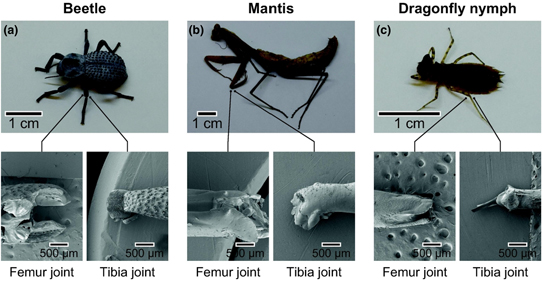Crossref Citations
This article has been cited by the following publications. This list is generated based on data provided by Crossref.
Li, Longhai
Sun, Wei
Guo, Ce
Guo, Huafeng
Lili, Liu
and
Yu, Ping
2022.
Mathematical model and nanoindentation properties of the claws of Cyrtotrachelus buqueti Guer (Coleoptera: Curculionidae).
IET Nanobiotechnology,
Vol. 16,
Issue. 6,
p.
211.
Dinges, Gesa F.
Bockemühl, Till
Iacoviello, Francesco
Shearing, Paul R.
Büschges, Ansgar
and
Blanke, Alexander
2022.
Ultra high-resolution biomechanics suggest that substructures within insect mechanosensors decisively affect their sensitivity.
Journal of The Royal Society Interface,
Vol. 19,
Issue. 190,
Nadein, Konstantin
and
Gorb, Stanislav N.
2024.
Abrasive Wear in The Leg Joints of Insects.
Advanced Materials Interfaces,
Vol. 11,
Issue. 2,
Beydizada, Narmin I.
Abels, Antonia
Schultheiss, Patrick
and
Frank, Erik T.
2024.
Injury-dependent wound care behavior in the desert ant Cataglyphis nodus.
Behavioral Ecology and Sociobiology,
Vol. 78,
Issue. 9,
Nadein, Konstantin
Kovalev, Alexander
and
Gorb, Stanislav N.
2024.
Tribological properties of the beetle leg joints.
Friction,
Vol. 12,
Issue. 12,
p.
2791.
Nadein, Konstantin
and
Gorb, Stanislav
2025.
Principal design of the femoro-tibial joint in the main groups of arthropoda and possible implications for robotics limbs.
Zoomorphology,
Vol. 144,
Issue. 1,


